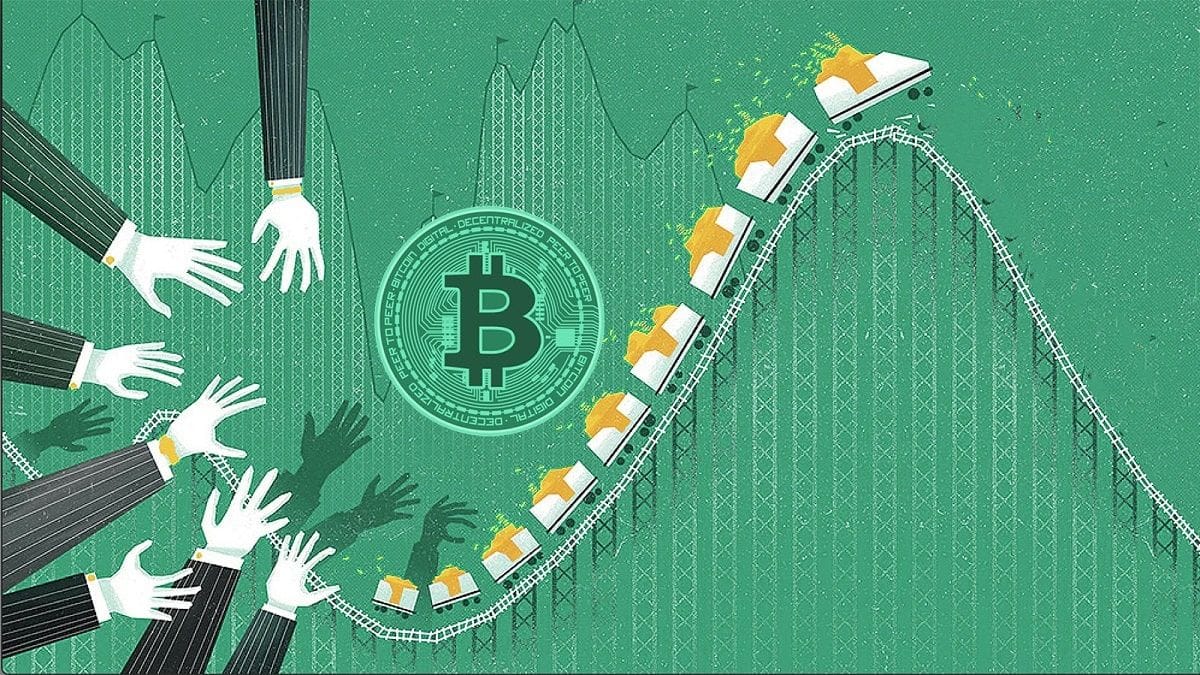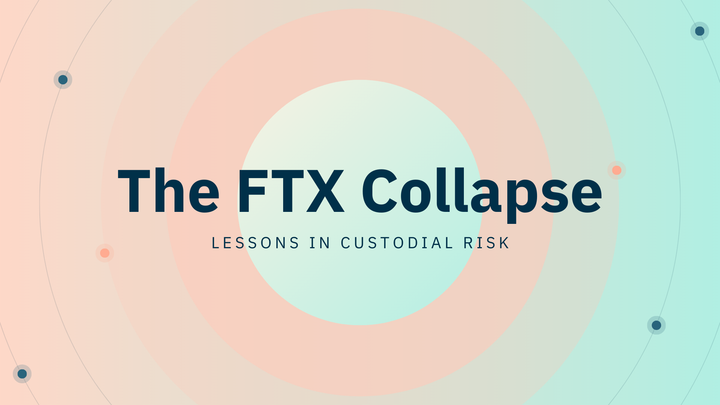Bitcoin’s Price Rally: Key Drivers, Hot Sectors, and the Next Cycle’s Trends

Bitcoin is on the rise again, and with it, the entire crypto market’s sentiment is turning bullish. As of mid-2025, BTC’s price has been climbing (some analysts even expect it to reach six figures within months), bringing both excitement and a frenzy of activity in various corners of the crypto ecosystem. In this article, we’ll analyze the factors fueling the current Bitcoin price rally, highlight which sectors of the crypto market are gaining the most attention (from Real World Assets to modular Layer-2s to memecoins), and discuss what trends could shape the next cycle.
Factors Behind the Current Bitcoin Rally
Bitcoin’s price doesn’t move in a vacuum. Several key drivers are behind the recent rally:
- The Bitcoin Halving and Supply Dynamics: In April 2024, Bitcoin underwent its scheduled halving, cutting the block reward from 6.25 BTC to 3.125 BTC. Historically, about a year after each halving, BTC has seen a strong bull run as the reduced supply issuance meets steady or growing demand. We are now in that post-halving period where the stock-to-flow ratio increased, and many long-term holders anticipated this supply shock. This built-in scarcity mechanism often creates a bullish narrative: fewer new BTC for sale daily means upward price pressure if demand stays constant or rises.
- Institutional Interest and ETF Momentum: One of the biggest stories has been the push for a spot Bitcoin ETF by major institutions. In late 2024, financial giants like BlackRock filed for Bitcoin ETFs, and while not all have been approved yet, the market expects eventual approval. This expectation has added a lot of institutional FOMO (fear of missing out). Already, we saw significant capital flows via futures ETFs and increased holdings by crypto funds. The possibility of a spot ETF unlocking access to trillions of dollars in traditional investment capital has been a bullish catalyst. Even news or rumors related to ETF progress tend to spark price jumps.
- Macro and Monetary Policy Shifts: After a turbulent 2022-2023 with rising interest rates, 2025 has seen central banks slightly ease off or signal an end to tightening. Global inflation cooled somewhat and, importantly, the U.S. Federal Reserve paused or even started cutting rates. This macro environment – a potential return to lower rates and more liquidity – typically benefits risk assets, including crypto. Additionally, ongoing geopolitical uncertainties and bank stability questions (like the banking issues of 2023) have renewed interest in Bitcoin as a hedge or alternative store of value. Some investors see BTC as “digital gold” in times of fiat uncertainty.
- Increased Adoption and Network Health: Bitcoin’s network fundamentals have been strong. Hash rate hit all-time highs, indicating miner confidence. Layer-2 solutions for Bitcoin (like the Lightning Network) keep growing, making BTC more usable. Moreover, more countries and big companies accumulated Bitcoin in reserves. These fundamental health indicators give investors confidence that the rally is backed by genuine growth in the network. Also, the number of addresses holding ≥1 BTC reached new highs – a sign of distribution and adoption (more people becoming wholecoiners).
- Market Structure and Cycles: The crypto market went through a brutal bear in 2022 (post the late-2021 highs). Much leverage was flushed out (e.g., major collapses like Terra, 3AC, FTX). By 2024-2025, the market structure was arguably more robust: those who remained were strong holders, and there was less selling pressure. Analysts often say bear markets sow the seeds for the next bull. By early 2025, any remaining “weak hands” had likely sold, and long-term holders (with low cost basis) dominated. This can create a supply crunch when new demand emerges. Indeed, one measure, the Spent Output Profit Ratio (SOPR), turned positive again as dormant coins stay dormant (holders not selling at small profit).
- Geopolitical and External Events: At times, external events have driven safe-haven flows to Bitcoin. For instance, tensions in global markets, or a currency crisis in an emerging economy, often correlate with local Bitcoin spikes. In late 2024 and 2025, events like uncertainty in U.S.-China trade, and some countries exploring CBDCs (central bank digital currencies) vs. banning crypto, created a narrative that owning Bitcoin is a hedge against geopolitical risk. Additionally, with a U.S. election on the horizon (Nov 2024), some speculated that policy changes (or anticipation thereof) influenced crypto – though this is hard to quantify, it's in the mix of narratives.
In summary, the current rally seems driven by the classic post-halving cycle, now turbocharged by an influx of potential institutional demand and a more favorable macro liquidity backdrop. The “hardening” of the market after surviving a harsh bear has also set the stage – there’s a sense that the worst is over, and optimism is returning. As Bitcoin’s price broke key technical levels, it invited even more momentum traders to jump in. It’s a positive feedback loop: bullish news leads to price pumps, which lead to media coverage and FOMO, which leads to more buying, and so on.
Sectors Gaining Attention in 2025
A rising tide lifts all boats, but in crypto, some boats rise faster. Several sectors have been especially hot during this Bitcoin-led uptrend:
- Real World Assets (RWA) Tokenization: The narrative of tokenizing real-world assets (like stocks, bonds, real estate, commodities) on-chain has gained massive traction. In 2024 and 2025, projects focusing on RWA saw increased interest. For example:RWA narrative is huge because it promises to bring trillions of dollars of real assets onto blockchain rails. This sector aligns with the idea of bridging TradFi with DeFi. As yields in TradFi (e.g., US bonds) have been attractive, crypto folks want those yields on-chain. Projects enabling that got a lot of buzz and investment. So, RWA tokens and related protocols are rallying in attention and often in token price, as people see them as a next wave of adoption.
- Tokenized U.S. Treasury bills became popular stable-yield products on-chain (Ondo Finance, Matrixdock and others facilitated T-bill tokens yielding 4-5%).
- Platforms like Maple Finance pivoted to RWA lending, Goldfinch connecting DeFi capital to real-world credit.
- Mantra Chain (mentioned in narratives) launched specifically to enable compliant tokenization of real assets, showing how serious this trend is.
- Even big institutions started to experiment: Goldman Sachs’ DAPPS platform, SIXX, etc., to tokenize funds or bonds.
- Modular Layer-2s and Scalability Solutions: Ethereum’s layer-2 ecosystem has exploded with activity. Specifically, modular blockchain architectures – separating execution, data availability, and consensus – are a big narrative. Celestia’s launch (first modular data availability network) was a milestone. Rollup-as-a-Service platforms like:have all made “launch your own L2” a reality. We now see a constellation of app-specific or community-specific rollups (for gaming, social, etc.). This is often called the “Internet of Chains” (Caldera’s tagline). The market is excited about modularity because it could overcome the monolithic chain limitations. Related to this, shared sequencers and interop layers (e.g., Synapse, LayerZero bridging many chains, Caldera’s Metalayer bridging rollupsc) are hot topics.In practical terms, tokens of L2s like Optimism (OP), Arbitrum (ARB), zkSync’s potential token (if/when), and tech providers (like SEI or others focusing on scaling) have seen increased interest. Many see L2s as not only scaling Ethereum but enabling new ecosystems. For example, OP Stack chains (Base, etc.), each might eventually have tokens or value accrual to OP via governance. ZK-rollups and validity proofs also fall in this sector; the success of StarkNet’s ecosystem and Polygon’s zkEVM have drawn attention.Essentially, scalability solutions are a top narrative – investors and users believe that as adoption grows, those providing the bandwidth will capture value. In 2025, this was among top narratives.
- Caldera (one-click rollups for projects),
- Conduit,
- Stackr/AltLayer,
- Polygon’s CDK,
- Optimism’s Superchain vision and Base’s success,
- Memecoins and Micro-caps: In classic crypto fashion, a Bitcoin rally often rotates into a frenzy for high-risk altcoins – none more emblematic than memecoins. Indeed, 2025 started with a memecoin resurgence. For instance, after Bitcoin’s initial pump, traders poured profits into coins like DOGE and SHIB (the OG memecoins) and then into a new wave of meme tokens. Early 2025 saw a mania around a few specific memes:Memecoins often ride on pure speculative fever and community pumps. The rally revives that by giving people gains and risk appetite. They are one of the most active sectors in early 2025 by trading volumes.It’s interesting: while Coingecko’s narrative update cautioned that memecoin mania may not sustain a supercycle, the first part of 2025 did see a surge. Even mainstream finance media covered it. We saw crazy events like:This is typical near a bull market’s early phase: memecoins hype up, often acting as a sentiment indicator. They bring in novices drawn by tales of huge ROI. That said, many will crash or become illiquid as the market matures. Coingecko’s analysis expects oversaturation by end of 2025.
- PEPE coin had another run (after its 2023 debut mania), proving meme magic hasn’t died.
- New entrants like Dawgz AI ($DAGZ) or other AI-themed memes tried to combine meme hype with trending tech (as DLNews noted, some new memecoins tout “utility” like AI tools).
- Social media on crypto Twitter and Reddit was ablaze with “which meme will 10x next” talk.
- Someone turned $250 into $1.5 million on a meme token (caught media’s eye).
- Gas fees on Ethereum spiked due to memecoin trading congestion (echoes of 2021’s Shiba craze).
- Decentralized Finance (DeFi) Renaissance & RWAs: We already touched on RWA in its own right, but broadly DeFi is having a mini-renaissance:
- Liquid Staking Derivatives (LSDs): With Ethereum’s Shanghai upgrade in 2023 allowing withdrawals, LSD sector boomed. By 2025, LSD protocols (Lido, Rocket Pool, Frax Ether, etc.) are huge, and now we even have LSDs for other chains (StakeStone for ETH/BTC as discussed, and new ones for SOL, AVAX, etc.). LSD tokens are highly popular as collateral and yield sources. The LSD narrative ties into Ethereum’s success (over 20% of ETH now staked).
- Restaking & EigenLayer: A new concept of “restaking” (using staked ETH to secure other networks via EigenLayer) gained interest, pointing to creative yield opportunities for stakers. This is part of the “liquid staking 2.0” narrative and modular security.
- Perp DEXs and On-chain Derivatives: Trading activity is shifting on-chain thanks to better L2 throughput. Protocols like GMX, DYDX (especially as dYdX moves to its own chain) got attention as people trade on decentralized platforms. We also saw innovative structured products (like Opyn’s, Ribbon’s evolutions) and options trading picking up.
- In summary, DeFi tokens that had lagged (UNI, AAVE, etc.) started to recover as TVLs crept up again and as new innovations (RWA lending, on-chain treasury management) offered revenue.
- Metaverse and Gaming (GameFi 2.0): The idea of the metaverse cooled off after 2021, but in 2025 there’s a more grounded approach: Web3 gaming with actual fun gameplay. Projects like MapleStory Universe (by Nexon) launching on Avalanche, Otherside by Yuga Labs progressing, and major gaming studios experimenting with NFTs in games, have reinvigorated interest. Tokens of gaming infrastructure (Immutable X, Gala, etc.) have seen bounces. Also, some GameFi projects combined with move-to-earn and other models are trending in niche circles. This sector isn’t leading the market, but it’s one to watch as a narrative (if a crypto game hits mass adoption, it could spark a “gaming coin” rally).
- Artificial Intelligence (AI) and Crypto: In broader tech, AI is the hottest theme (thanks to ChatGPT mania). Crypto latched on, with many projects branding as “AI + blockchain”. Some legitimately explore AI marketplaces, data for AI, or using AI for trading. Others just slapped AI for hype (like memecoins did). For example, SingularityNET (AGIX) and Fetch.ai (FET) rallied earlier in 2023 and maintain some momentum. While the direct connection of AI and blockchain can be tenuous, it’s a narrative where two hype cycles intersect. So, it gets retail attention: e.g., any coin with AI in its name pumped. Coingecko noted AI agents as a narrative for 2025. We saw collaboration like CryptoGPT launching, etc. This sector’s performance is very narrative-driven; if AI tech keeps booming outside, it can cross-pollinate with crypto interest.
In short, beyond Bitcoin and Ethereum, the winners of attention in this rally are those that:
- Bridge real finance with crypto (RWA, tokenized yields),
- Solve pressing issues of scaling (L2s, modular networks),
- Play on speculative fun and culture (memes),
- Or align with bigger tech trends (AI, possibly Web3 gaming).
We also see hints that sectors like Decentralized Physical Infrastructure Networks (DePIN) have a growing narrative (like Helium and others for wireless, etc., which Coingecko flagged), though their market caps remain relatively small.
Trends to Watch for the Next Cycle
Looking forward, several trends could shape the trajectory of the crypto cycle beyond the immediate rally:
- Mainstream Regulatory Clarity (or Lack Thereof): By 2025, some countries (like the EU with MiCA) set clearer rules for crypto. The U.S. regulatory environment is still somewhat uncertain, but there’s hope for clearer distinctions (commodities vs securities) and possibly approvals of ETFs and bank custody. If regulators embrace crypto (or at least set workable frameworks), that will boost institutional adoption. Conversely, heavy-handed moves could cause short-term dips but likely redirect innovation elsewhere (like more DeFi anonymity or jurisdictions arbitrage).
- Continued Institutionalization and Financialization: If Bitcoin ETFs launch, expect Ethereum to follow (ETFs for ETH). Also, traditional finance might increasingly use stablecoins or blockchain settlement (e.g., Swift experiments with Chainlink, or JPM’s blockchain projects). Crypto as an asset class could become more ingrained in portfolios (some predict that the 2025 bull might be the last huge retail-driven one, as by next cycles crypto is more integrated and thus perhaps less volatile). Additionally, sovereign wealth funds and nation-states might openly accumulate Bitcoin – that would be a game changer narrative if say a BRICS nation or others do so.
- Web3 Social and Creator Economy: The next cycle could see successful decentralized social media platforms or NFT-driven content economies. While 2021-2022 had an NFT art boom, the next wave might integrate utility: e.g., music NFTs with royalty streams, social tokens for communities. Already, lens protocol, friend.tech on Base, and others hint at this. If one of these really breaks out, it merges with mainstream creator trends (OnlyFans models using NFTs, or TikTokers with social tokens, etc.). That could onboard new users.
- Interoperability and Cross-Chain UX: Users don’t care about chains; they care about seamless experiences. Many projects are working on abstracting away chain differences – via wallets that auto-route transactions, bridges like LayerZero making one-click cross-chain swaps, etc. A trend likely is the diminishing of “chain tribalism” as everything becomes connected. A user might use an app that taps into multiple chains under the hood (like a Metamask snapping into multiple networks, etc.). This is already happening – Thorchain swaps, Squid (Axelar) routing, etc. If this matures, the ecosystem could grow as a whole, with value accruing to hubs (maybe L1s that act as hubs or messaging protocols).
- Bitcoin’s Evolving Narrative: For Bitcoin itself, aside from price, interesting things are happening. The rise of Ordinals and BRC-20 tokens on Bitcoin in 2023 opened Bitcoin to NFT-like and token experiences. This increases fees and use-cases but also spurred debate. In coming years, if Bitcoin embraces layer-2s for smart contracts (RSK has existed, Stacks with Nakamoto consensus, etc.), we might see a bit of blending of Bitcoin into the wider crypto economy more. Alternatively, Bitcoin sticks to digital gold thesis – which is fine because macro players will allocate to it in times of uncertainty. By next cycle, Bitcoin could be an even more mature asset class – volatility gradually reducing, but still serving as the tide for the market.
- Emerging Markets and Global Adoption: The next wave might not be Western-led. In 2023-25, we saw more adoption in Latin America, Africa, and Asia. For example, real world asset tokenization is big for countries facing inflation (they want USD yield on-chain). Asia’s retail (Korea, Vietnam, etc.) often sparks meme runs. The "global south" might lead in using crypto for necessity (remittances, inflation hedge). If a major developing economy integrates crypto deeply (like how El Salvador adopted BTC, or others use stablecoins at scale), that could drive narrative and policy elsewhere.
- Eco-friendly and ESG narrative: One risk for next cycle is environmental scrutiny. Bitcoin’s energy use is always attacked. But ironically, now Bitcoin mining is integrating with renewable energy (flare gas capture, solar mining farms). By next cycle, crypto might push a narrative of being a green innovation (especially if PoS chains flourish and BTC mining latches onto stranded renewables). ESG-conscious funds might consider Ethereum since it’s PoS. This narrative could shape investment flows.
- Memecoins and Culture Cycles: Historically, each cycle has its cultural phenomena (2017 ICOs, 2021 DeFi Summer then NFTs, etc.). For 2025-2026, perhaps it will be something like “AI x Crypto” or “Physical Backed Tokens” or “Metaverse real usage” that captures imagination. Memecoins will likely come in waves (they tend to peak in early bull phase, then again late bull in a blow-off top). According to CoinMarketCap’s predictions, memecoins by 2025 might reach a saturation tipping point, implying maybe one last explosive run then fade. It’s possible the market matures where memes remain but aren’t as explosive. Or not – human nature doesn’t change, and new Gen Z traders love their memes.
To wrap up: The Bitcoin rally we’re witnessing now is not just about Bitcoin. It’s the spark igniting various powder kegs of innovation and speculation across crypto. Real World Asset tokenization, modular & layer-2 scaling, and yes, memecoins and cultural fads, are all simultaneously playing roles. These are shaping where capital and attention flow in the near term. Meanwhile, the longer arc of this next cycle seems oriented towards greater integration of crypto with traditional finance and real economies (through RWAs and institutional adoption), while preserving the decentralized ethos via technology leaps like scalable L2s and more autonomous DeFi.
As an investor or participant, it’s wise to observe which narratives have lasting substance:
- RWAs and scaling solutions address real needs and likely have staying power (with real revenues or users).
- Memecoins and hype trends can make fortunes but tend to burn out quickly (timing is everything there).
- Bitcoin will likely remain the anchor – its rally is both a sign of confidence and a liquidity driver. If BTC continues strong, it provides cover for alts to flourish (the classic pattern: BTC leads, then ETH, then large caps, then small caps).
For the next cycle’s latter stages, one might expect exuberance around something unforeseeable now – each cycle has a surprise. Perhaps it will be some killer app (the elusive “mainstream dApp” millions use unknowingly) or a nation-state event (like a country launching a CBDC that coexists with crypto or putting part of reserves in BTC).
In any case, the trends we’ve discussed here will set the foundation. The current rally, sectors’ momentum, and emerging trends all point to crypto continuing its evolution from a speculative Wild West to a more integrated, indispensable part of the global financial and tech landscape. Keep an eye on those key narratives – they often become self-fulfilling prophecies in this industry, as money and talent flow where the story is compelling.



Comments ()